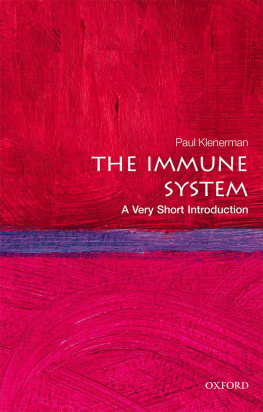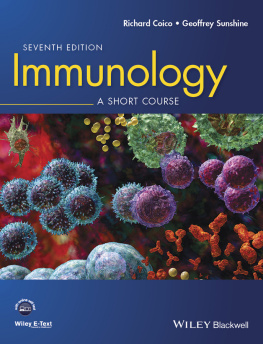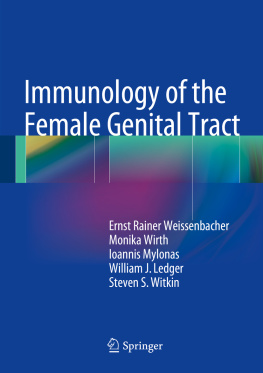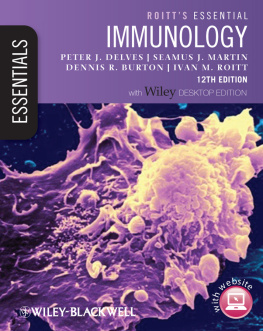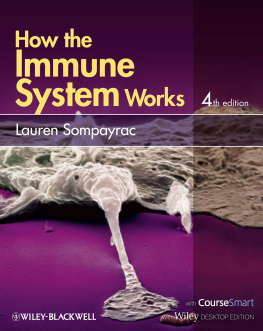Publishers Notice
Please note that this version of the ebook does not include access to any media or print supplements that are sold packaged with the printed book.
W. W. Norton & Company has been independent since its founding in 1923, when William Warder Norton and Mary D. Herter Norton first published lectures delivered at the Peoples Institute, the adult education division of New York Citys Cooper Union. The firm soon expanded its program beyond the Institute, publishing books by celebrated academics from America and abroad. By midcentury, the two major pillars of Nortons publishing programtrade books and college textswere firmly established. In the 1950s, the Norton family transferred control of the company to its employees, and todaywith a staff of five hundred and hundreds of trade, college, and professional titles published each yearW. W. Norton & Company stands as the largest and oldest publishing house owned wholly by its employees.
Copyright 2021 by W. W. Norton & Company, Inc.
All rights reserved
Editor: Betsy Twitchell
Editorial Advisor: Denise Schanck
Senior Associate Managing Editor, College: Carla L. Talmadge
Assistant Editor: Danny Vargo
Senior Production Manager, College: Sean Mintus
Developmental Editor: Eleanor Lawrence
Copyeditor: Christopher Curioli
Managing Editor, College: Marian Johnson
Media Editor: Kate Brayton
Content Development Specialist: Todd Pearson
Media Project Editor: Jesse Newkirk
Associate Media Editor: Jasmine N. Ribeaux
Media Editorial Assistant: Kara Zaborowsky
Ebook Production Manager: Megan Crayne, Kate Barnes
Managing Editor, College Digital Media: Kim Yi
Marketing Manager, Biology: Ruth Bolster
Director of College Permissions: Megan Schindel
Senior Photo Editor: Ted Szczepanski
Permissions Associate: Patricia Wong
Design: Juan Paolo Francisco
Illustration and Design: Nigel Orme
Composition: Graphic World, Inc.
Manufacturing: TC Transcontinental
Permission to use copyrighted material is included in the back of the book.
Library of Congress Cataloging-in-Publication Data
Names: Parham, Peter, 1950- author.
Title: The immune system / Peter Parham.
Description: Fifth edition. | New York, NY : W.W. Norton & Company, [2021] | Includes bibliographical references and index.
Identifiers: LCCN 2020047308 | ISBN 9780393533354 (paperback) | ISBN 9780393533309 (epub)
Subjects: LCSH: Immune system. | Immunopathology.
Classification: LCC QR181 .P335 2021 | DDC 616.07/9dc23
LC record available at https://lccn.loc.gov/2020047308
W. W. Norton & Company, Inc., 500 Fifth Avenue, New York, NY 10110
wwnorton.com
W. W. Norton & Company Ltd., 15 Carlisle Street, London W1D 3BS
Peter Parham is on the faculty at Stanford University where he is a professor in the Department of Structural Biology and the Department of Microbiology and Immunology.
Ebook version: 5.1-retailer
Preface
This book is intended for students of all types and backgrounds who are coming to immunology for the first time. Its guiding principle is to focus on human immune systemshow they work, how they differ, and how their successes, compromises, and failures affect the lives of every one of us. In providing a coherent, concise, and contemporary account of the immune mechanisms the human body uses to tame its commensal microorganisms and eliminate pathogenic microorganisms, the books emphasis is on what we know, rather than how we got to know it. In other words, the main goal is to explain the work of nature, not that of the immunologists.
During the past 5 years the community of researchers studying human immunology has significantly increased. Driving this welcome change has been an expanding portfolio of analytical methods that define at high resolution the cells, genes, macromolecules, and metabolites present in the small samples of blood and tissue that are collected from patients for clinical tests. These methods enable large data sets to be quickly collected. For decades, data collection was the rate-limiting step in immunological studies, but that is changing. Interpreting data now consumes more time, as does writing the manuscript of a scientific paper and engaging in lengthy negotiation with reviewers and editors for an eventual publication. As a result, primary publications are increasingly archival, and reviews are the main source of reading material for the interested nonexpert.
Since publication of the fourth edition of The Immune System in 2015, immunological knowledge and its clinical applications have significantly advanced on many fronts. This necessitated substantial revision to text and figures in all chapters. Retained in this fifth edition is The Immune Systems organization into 17 chapters, which correspond to the 17 chapters of the fourth edition. For readers and instructors familiar with the fourth edition, what follows is a guide to the major changes; for those who are new to The Immune System, what follows is an overview of the books contents.
. This chapter has undergone major revision to reflect our increased understanding of the scope and importance of the induced innate response. Innate lymphoid cells, the innate equivalent of CD4 T cells, are a new addition, and material on inflammasomes and cytokine action, especially that of IL-1, has been thoroughly revised and updated. The autoinflammatory diseases, such as the hereditary periodic fevers, are now dealt with in this chapter, which is where they belong.
The basic biology of the adaptive immune response is covered in the next six chapters of the book, which comprise three pairs. The first pair examines the mechanisms that B cells ( also includes the various mechanisms by which peptide antigens are generated from pathogen proteins, depending on whether their sources are extracellular or intracellular pathogens. These sections have been updated with several new figures.
The second pair of chapters compares the development of B cells (), including the gene rearrangements that generate the antigen receptors and the selective processes that eliminate cells with any potential for causing autoimmunity. At the ends of these two chapters, mature but naive B cells and T cells are seen to enter the circulation of the blood and lymph to search for antigens that specifically bind to their antigen receptors.
The third pair of chapters describes how naive B cells (.
covers the related topics of immunological memory and vaccination. With a new coronavirus killing people worldwide at the time of writing this book, these are subjects being aired and debated on a daily basis. This chapter includes much new insight regarding memory B and T cells.
In . It focuses on lymphocyte populations that exhibit characteristics of innate and adaptive immunity. These include natural killer cells and four other populations of innate lymphoid cell, as well as cells, natural killer T cells, and mucosa-associated invariant T cells. Also covered are ligands, bound by receptors on these various cells.
covers the epidemic of acquired immunodeficiency caused by the human immunodeficiency viruses (HIV-1 and HIV-2). In the absence of effective treatment, HIV infection gradually eliminates all of a persons CD4 T cells, thereby making that person susceptible to other infections from which the individual eventually dies. Now there are effective antiretroviral drugs that effectively inhibit HIV. The means by which some rare individuals manage to maintain their health despite being infected with HIV are also discussed.


